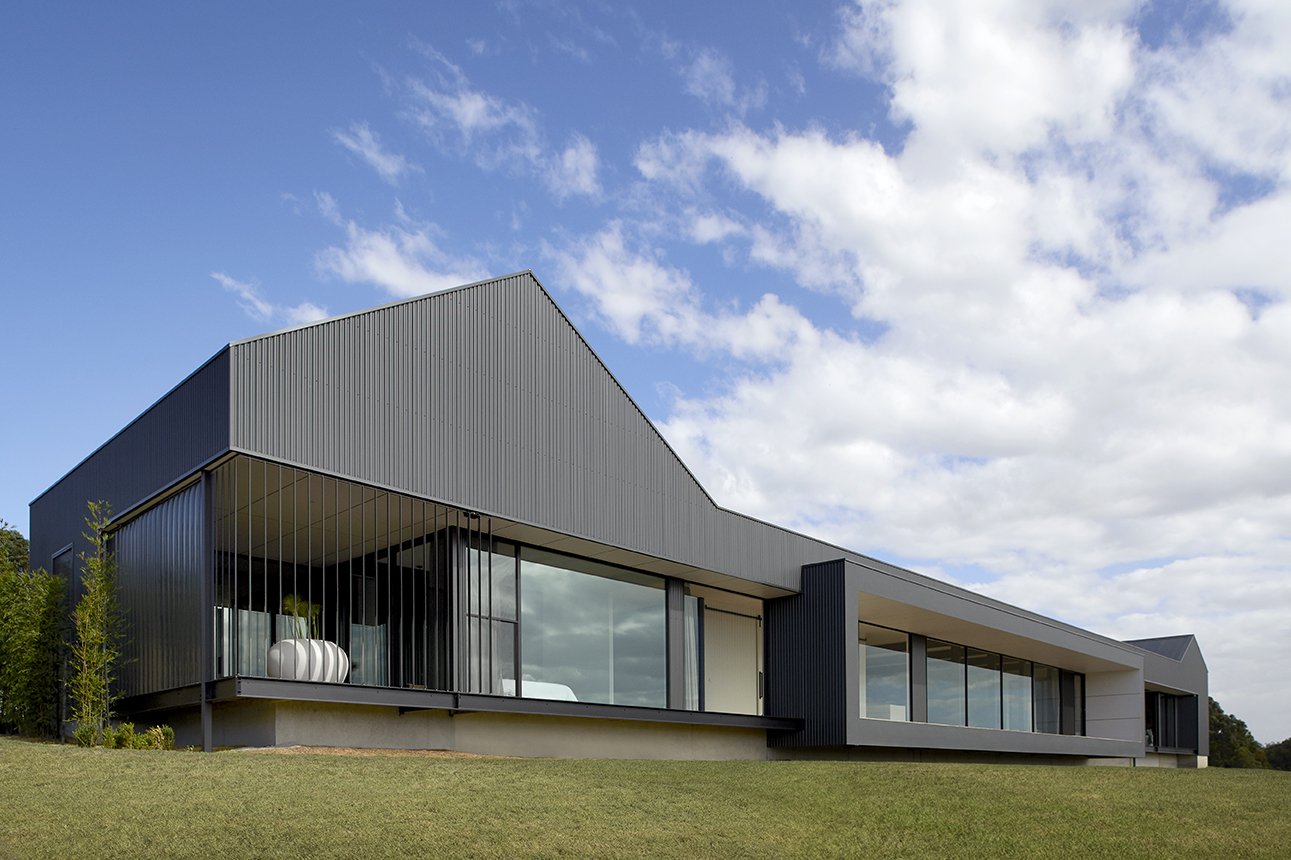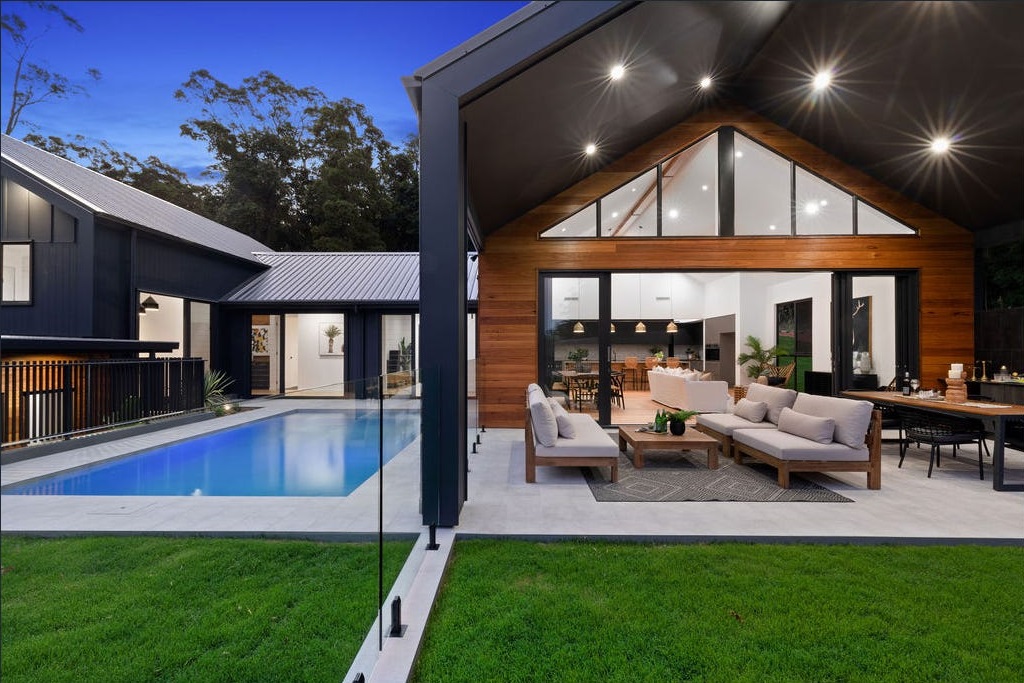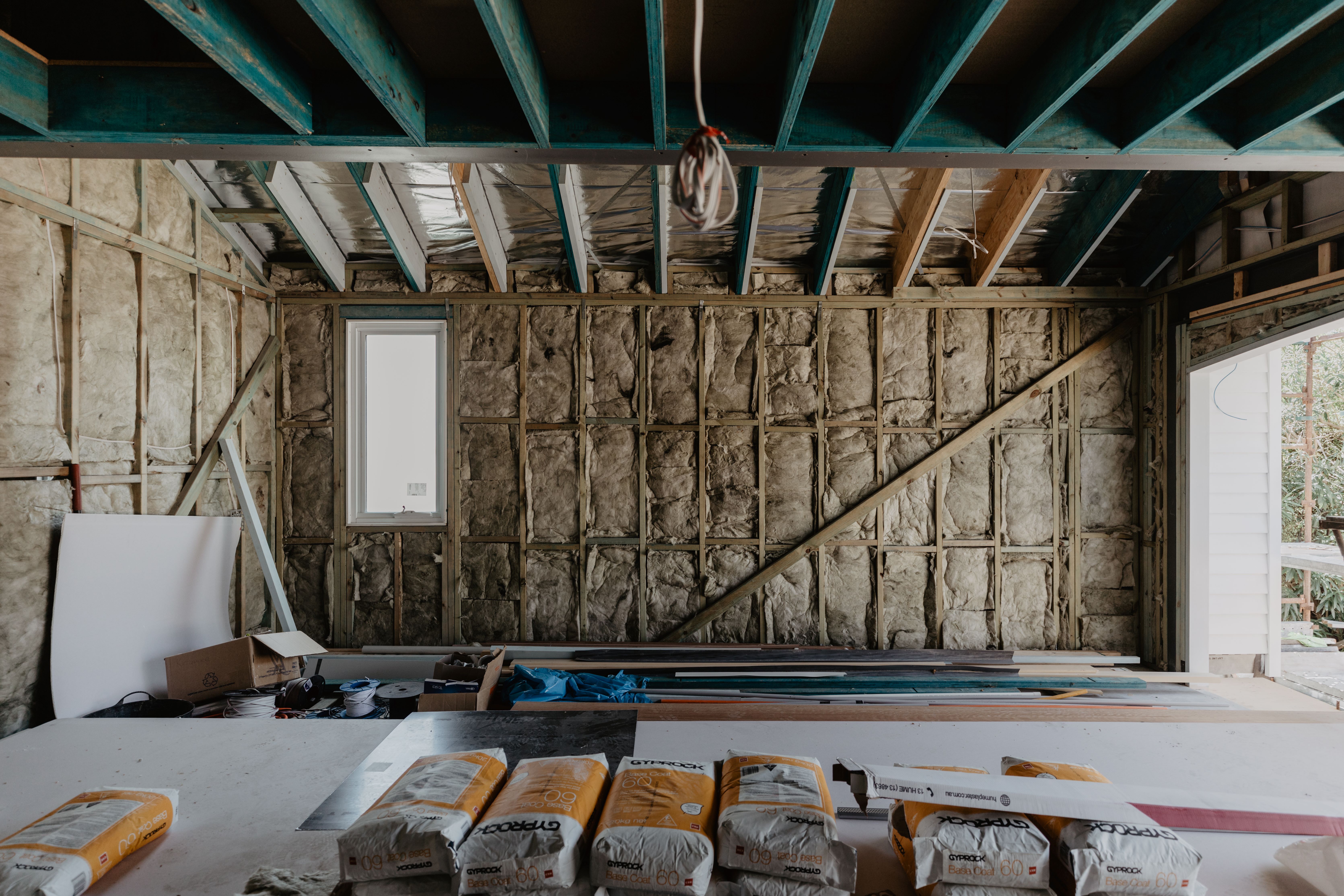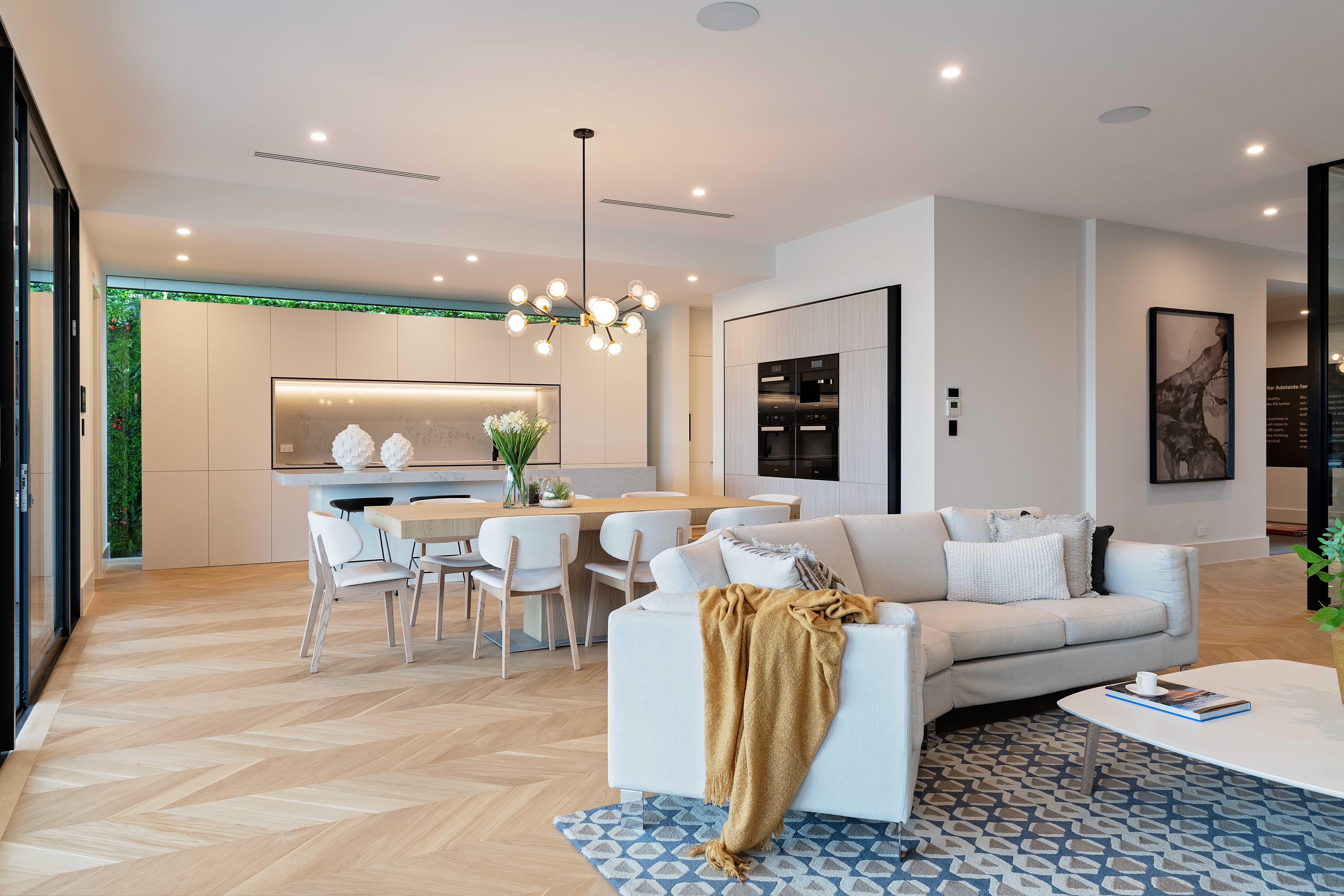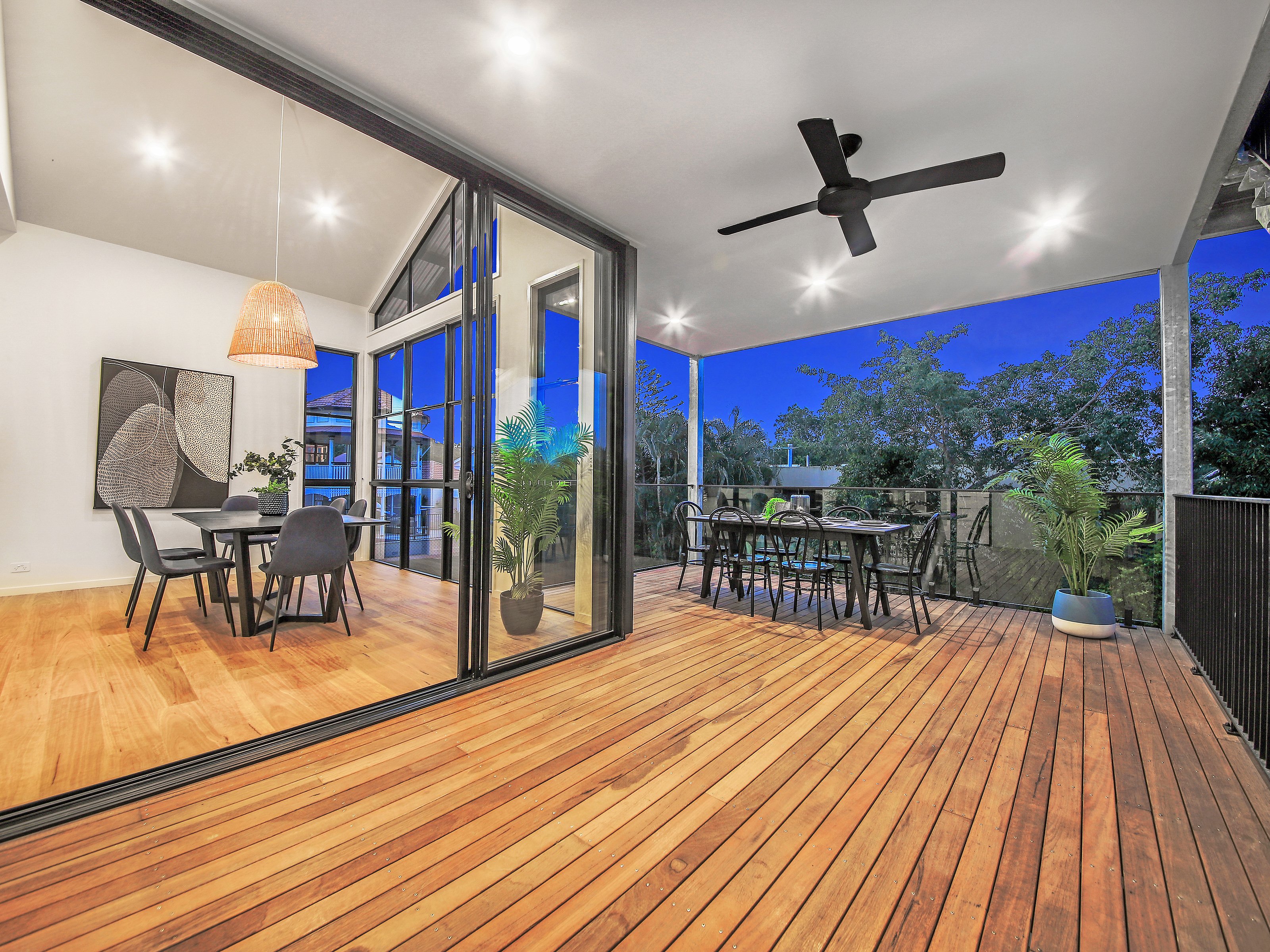How to Achieve a 7-Star Energy Efficient Home with the NCC Changes in Mind
Looking to create a 7 star building? Read Stegbar’s expert guide on the latest NCC changes and learn practical tips on insulation, window choices, shading, and more.
In 2023, Australia’s National Construction Code (NCC) made some big changes to boost the energy efficiency of new homes. The most notable update? Raising the minimum energy rating from 6 to 7 stars.
This means new homes have a requirement to be more energy-efficient, ensuring they’re comfortable to live in and cheaper to run. The good news is that creating an 7 star energy efficient home after the NCC changes is achievable with a range of options available to homeowners and builders. That’s why we’ve put together an easy-to-follow guide to help builders and homeowners meet this new standard for energy efficient homes. And no, it’s not all about windows and doors (although they are incredibly important)!
Orientation
The direction your house faces impacts its energy efficiency. For instance, a home facing west will receive a lot of sun in the afternoon, which can make rooms along that orientation run hot, requiring additional cooling in summer. This is particularly true during the summer months and in warm climate zones like Queensland.
On the other hand, south-facing rooms receive less direct light, so they are typically cooler and potentially require heating. This will be more noticeable in cooler climates like Victoria, South Australia, and the ACT, particularly in the winter.
East-facing spaces will be warm in the morning but cool in the afternoon. This means they can be too hot in the morning in warm climates and too chilly in the afternoon in cold climates!
Orientation tips for an energy efficient home
- North-facing homes/living spaces are optimum for sun exposure and shade (if this is an option).
- Energy-efficient materials can curb the impact the elements have on a home.
- Working with the local climate to maintain a desirable temperature can reduce orientation challenges in your 7 star building (also known as passive design).
Read this next: How to Build an Energy Efficient Home on a Budget
Shading
Shading plays a crucial role when building an energy-efficient home. It helps regulate indoor temperatures by blocking or diffusing direct sunlight, reducing the need for artificial cooling and heating.
When we talk about shading and homes, the easiest way to make an impact is through eaves. Eaves are an excellent addition to any 7 star building following the NCC changes. They provide protection from the sun, reduce heat inside your home during summer, and offer a shield from wind and rain. Eaves also help maintain a comfortable indoor temperature throughout the year and can significantly lower energy costs.
Shading tips for an energy efficient home
- Plant trees and shrubs strategically around your home to block direct sunlight.
- Louvres, shutters, and awnings can be adjusted based on the time of day or season to provide flexible shading solutions.
- Blinds, curtains, and energy efficient glazing on windows can block direct sunlight and reduce heat transfer.
- Choose materials that help mitigate the impact of the sun and weather on your home.
Area of glazing
When planning your dream energy efficient home, large windows can create bright, open spaces and add architectural beauty. They fill your home with natural light and connect the indoors with the outdoors, making everything feel more expansive and inviting. And who doesn’t want to sit in their bright living area, enjoying a coffee and taking in the scenic views?
However, large windows can be less thermally efficient than solid, insulated walls. So, following the NCC changes, it’s important to find a balance between window size, glass area, and energy efficiency.
Glazing tips for an energy efficient home
- Upgrade to double glazing to improve thermal efficiency. Double glazing helps reduce heat loss in winter and heat gain in summer.
- While large windows look great, balancing the size and number of windows can help create an energy efficient home.
- Choose window frames made from materials with good insulating properties. Timber is the best for efficiency and a great post-NCC change choice!
- Blinds, curtains, and energy-efficient glazing options can reduce heat transfer and enhance the energy efficiency of your windows.
- Position windows to maximise natural light while minimising unwanted heat gain or loss.
Read this next: A Comprehensive Guide to Energy Efficient Glass for Windows and Doors
Insulation
Upgrading insulation is a simple and relatively cost-effective way to improve your home’s energy efficiency after the NCC changes. While the efficiency gains might be modest, this upgrade can help you create a 7-star building.
Insulation ratings, known as R-values, measure a material’s resistance to heat flow. The higher the R-value, the better the insulation’s effectiveness. For example, an R-value of 1.3 offers basic insulation, while an R-value of 6.0 provides superior thermal resistance. Choosing the right insulation for your energy efficient home depends on your climate and specific goals.
Insulation tips for an energy efficient home
- Ceiling insulation enhances thermal efficiency and helps maintain a consistent indoor temperature.
- Wall insulation reduces heat loss in winter and heat gain in summer.
- Floor insulation prevents heat loss through the floor, which is particularly important for homes with raised floors or basements.
Downlights
Downlights might seem low on the list, but they can make a big difference when building an energy efficient home. This is largely due to the space that’s required around the wiring of a typical downlight in your ceiling. For example, if you were to install 15-20 regular downlights in common areas of your home, this would leave several pockets of uninsulated space in your ceiling, which can increase the amount of heat and cold that is transferred into the home.
The good news is that IC-4-rated downlights can come into direct contact with thermal insulation. This ensures maximum insulation in your ceiling spaces, helping your 7 star building comply with the NCC changes.
Downlight tips for an energy efficient home
- IC-4 rated lights allow for full insulation coverage, improving thermal efficiency.
- LED bulbs use less energy and produce less heat compared to traditional bulbs.
- Position downlights to maximise illumination while minimising energy consumption.
Ceiling Fans
Installing ceiling fans can greatly improve your home’s energy efficiency, especially in warmer climates. Ceiling fans help circulate air, making spaces feel cooler without relying solely on air conditioning.
Ceiling fans can be particularly effective in outdoor areas like patios. They provide a cooling breeze that makes the space more usable and comfortable, significantly boosting your energy efficiency rating. For example, in Queensland, if you install a ceiling in your covered outdoor area (such as a patio), you can achieve an increase of nearly 1 star in your energy efficiency rating. Please note that if you’re in a cooler climate, like Victoria, fans may not impact your energy rating in the same way.
Ceiling fan tips for an energy efficient home
- Outdoor fans enhance comfort and energy efficiency for outdoor living spaces in warmer climates.
- Indoor fans improve air circulation and reduce the need for air conditioning, although they are less impactful than outdoor fans.
- Choose fans with energy-efficient motors and blades for better performance.
House Colour
The colour of your home and roof plays a role in energy efficiency. In warmer climates, lighter colours like white and grey reflect sunlight and heat, keeping the home cooler. In cooler climates, darker colours like black and charcoal absorb heat, helping to maintain warmth.
Colour tips for an energy efficient home
- Lighter colours reflect sunlight, reducing cooling costs in warm climates.
- Darker colours absorb heat, reducing heating costs in cool climates.
- Special coatings can enhance the reflective properties of your roof, improving energy efficiency.
Window Type and Configuration
It wouldn’t be an article from us without some expert guidance on windows and doors! Choosing the right windows and doors is crucial for an energy efficient home after the NCC changes.
The type and configuration of your windows can affect your energy efficiency rating. For example, choosing awning windows over sliding windows in mixed or cooler climates may increase your rating. Awning windows create a tighter seal in the frame, allowing for less heat and cold transfer, keeping the home more comfortable. In warmer climates, sliding windows can enhance airflow, contributing to a more comfortable home environment and better energy rating.
Window tips for an energy efficient home
- Awning windows provide a tight seal, improving energy efficiency in cooler climates.
- Sliding windows enhance airflow, ideal for warmer climates.
- Double glazing improves thermal efficiency, reducing heat loss and gain.
- Choose energy-efficient frames made from materials with good insulating properties, such as Stegbar’s Envira Collection.
Read this next: What Are Thermally Broken Windows and Doors? Understanding the Latest in Energy Efficiency
Window and Door Performance Upgrades
Upgrading your windows and doors is a great way to boost your home’s energy rating after the NCC changes. Two key factors to consider are the type of frame and the type of glass you use. Choosing the right combination can make a big difference in your home’s energy efficiency.
Window and door performance tips for an energy efficient home
- Your climate zone influences the best window and door options – check your climate zone online.
- Aluminium is durable and low-maintenance, timber is energy-efficient and aesthetically pleasing, composite combines durability and thermal performance, and thermally broken frames provide superior energy efficiency.
- Clear, toned, Low E, and double-glazed glass each impact energy efficiency and performance differently, so explore the benefits of each.
Read this next: Choosing the Right Windows and Doors: A Complete Guide
Are You Ready to Create Your 7 Star Building?
To explore how you can meet the new energy requirements for your home, contact one of Stegbar’s expert consultants or visit one of our showrooms today. Stegbar can help you navigate changing legislation with practical advice on how to create an energy efficient home.
Your Cart
QUOTES
x0No products in the Quote Drawer.
Your Stegbar Quote
item(s)Attach Documents(Plans, Reports, Photos)
Installation
Product Selection Summary
No products in the Quote Drawer.
Your Quote
item(s)Quote submitted
Thank you for your quote request.
We look forward to helping you with your project.
You will receive an email confirming your enquiry number.
A Stegbar team member will contact you within two business days to discuss your project.

